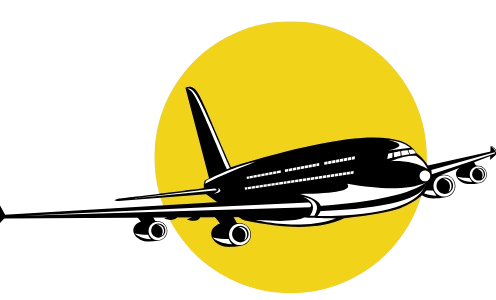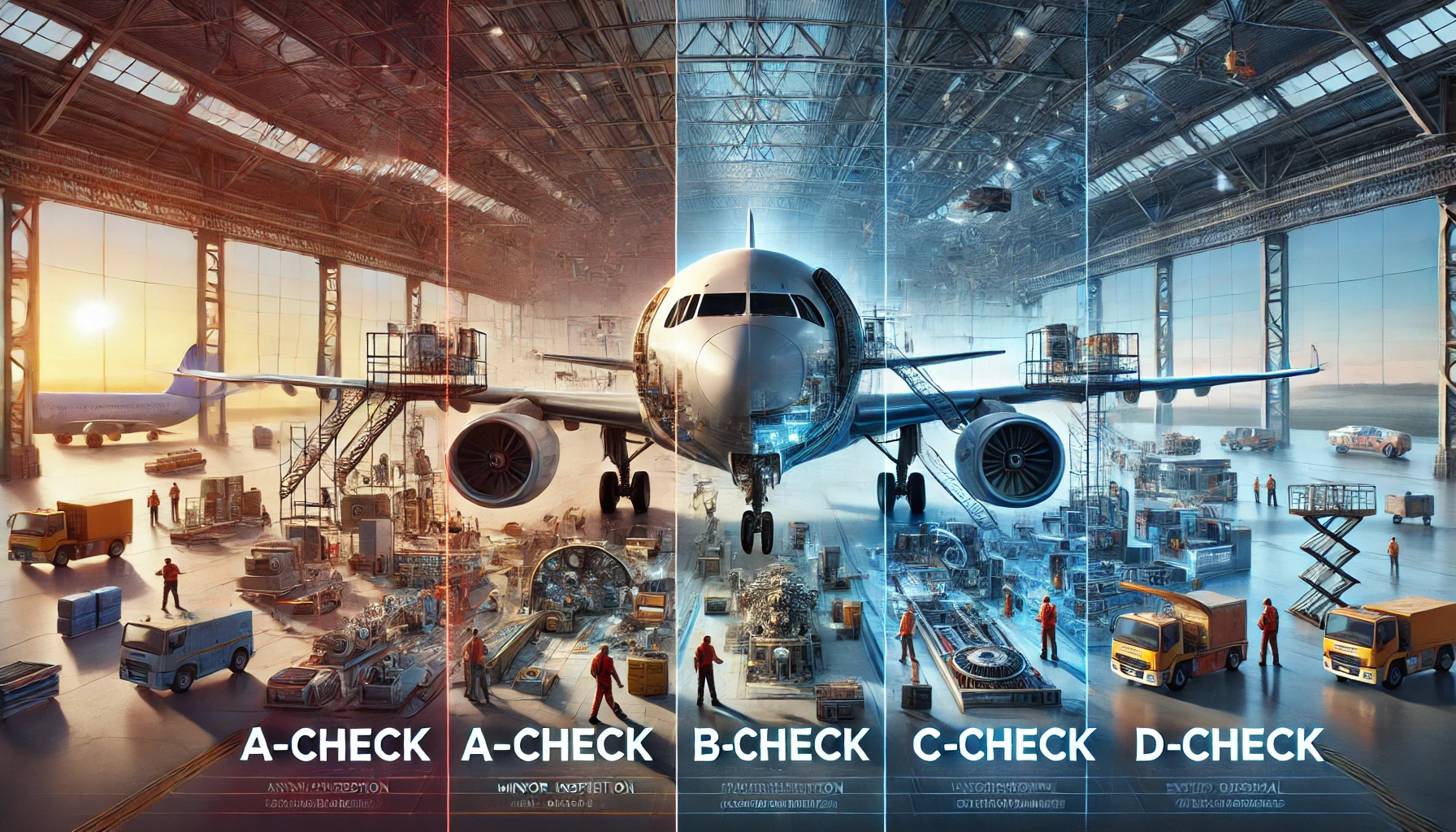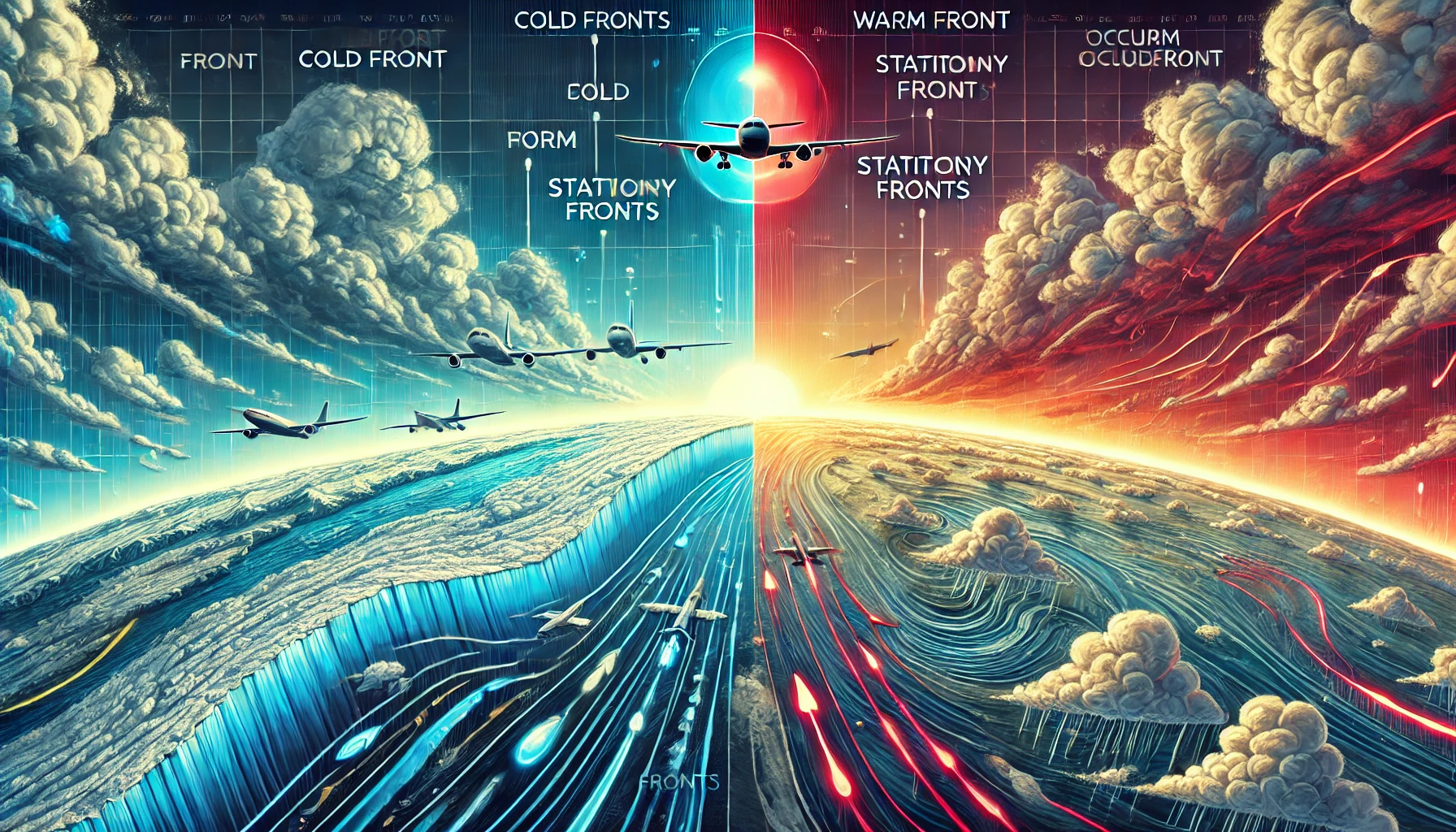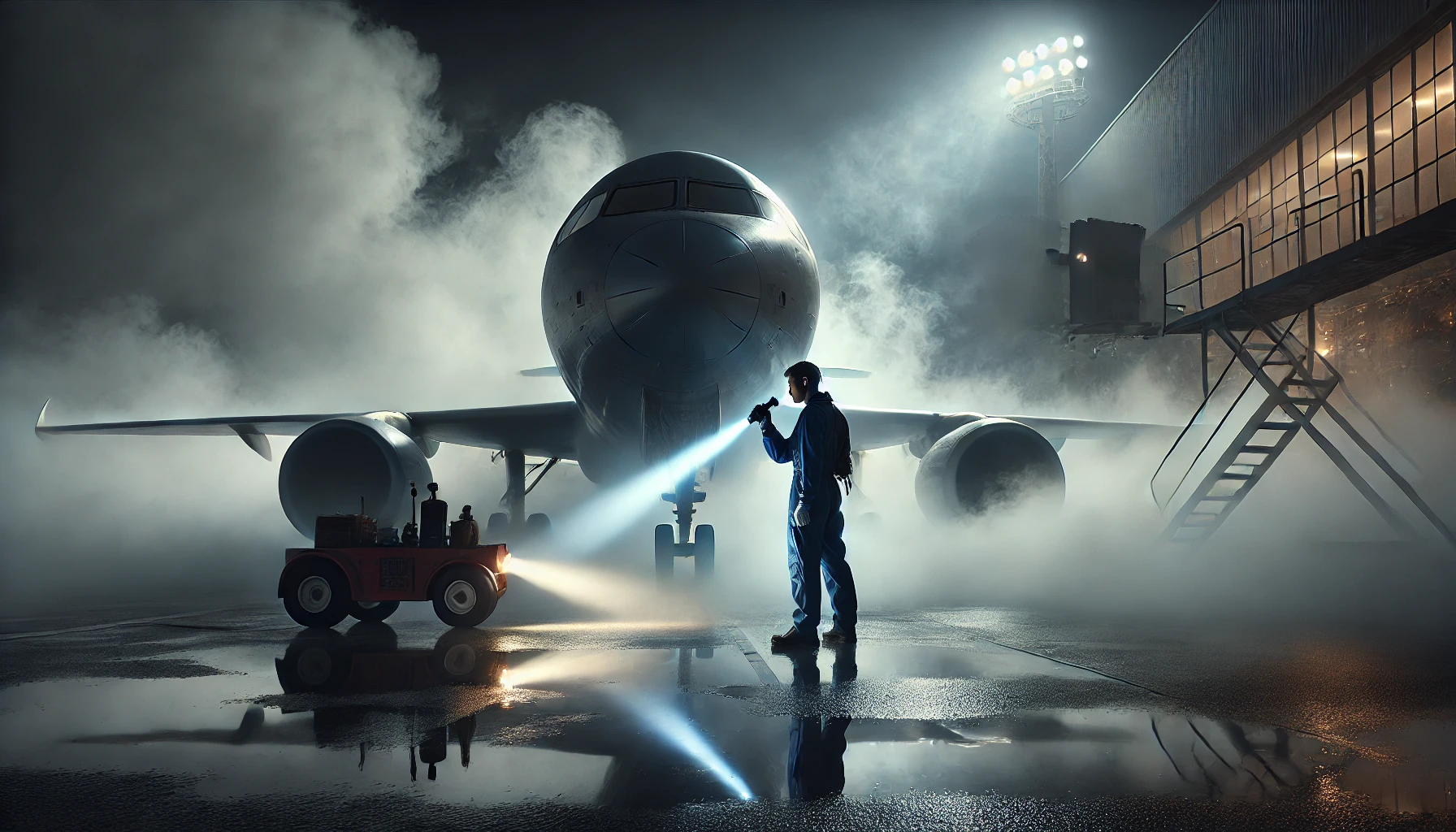When it comes to keeping our beloved aircraft soaring high and safe, maintenance is key. But did you know that not all inspections are created equal? Just like a well-planned flight path, the world of aircraft maintenance is mapped out into distinct categories—A, B, C and D—each serving a unique purpose in ensuring airborne safety.
Whether you’re an aviation enthusiast or a seasoned professional looking to brush up on your knowledge, this blog post will take you on an enlightening journey through the various tiers of aircraft inspections.
Buckle up as we explore what each category entails, why they’re crucial for airworthiness, and how they contribute to the overall health of our flying machines! Let’s dive in! ✈️
Introduction: The importance of regular maintenance checks for aircraft safety
Aircraft safety is a paramount concern in the aviation industry. Regular maintenance checks play a critical role in ensuring that every flight takes off and lands safely. Just like how a car requires routine servicing to keep it running smoothly, aircraft demand meticulous inspections at various intervals to uphold their performance and reliability.
From small general aviation planes to large commercial airliners, each aircraft needs thorough evaluations before embarking on journeys through the skies. These inspections are not just mandatory; they serve as vital checkpoints that help identify potential issues before they become serious problems.
In this article, we will explore the intricate world of aircraft maintenance checks—from daily assessments to more extensive overhauls—illustrating their importance for both pilots and passengers alike. Join us as we delve into different categories of inspections and uncover the essential practices keeping our skies safe.
What is Aircraft Maintenance?
Aircraft maintenance encompasses a series of procedures designed to ensure the safety and reliability of an aircraft. This vital process involves regular inspections, repairs, and replacements as necessary.
Safety is paramount in aviation. Regular maintenance checks help identify potential issues before they escalate into serious problems. Every component plays a crucial role in ensuring that flights are safe for passengers and crew alike.
Maintenance can vary widely based on the type of aircraft and its operational requirements. From small private planes to large commercial jets, each has unique needs that must be met diligently.
In essence, effective aircraft maintenance not only enhances performance but also extends the lifespan of the aircraft itself. The goal is straightforward: keep every flight smooth and secure for everyone on board.
Types of Maintenance Checks:
Aircraft maintenance checks come in several types, each designed to ensure safety and efficiency. Daily inspections are the most frequent. They focus on a quick review of critical systems before flights.
Transit inspections occur during aircraft movement between locations. These checks are essential for identifying any immediate issues that could affect performance.
A Check inspections happen approximately every 400 flight hours or every 200 days, targeting minor tasks like changing filters and lubricating parts. B Checks, performed around every six months, delve deeper into system functionality while still being less comprehensive than later checks.
C Checks require more time as they occur roughly every 20–24 months. This thorough inspection covers major components and systems, ensuring everything operates correctly over extended use.
Lastly, D Checks represent the ultimate examination of an aircraft’s structure and systems. Conducted about every six to ten years, these extensive repairs address wear and tear accumulated during years of service.
Daily Inspections
Daily inspections are the first line of defense in aircraft maintenance. These checks ensure that an aircraft is safe and ready for flight every day.
Typically performed by ground crew or pilots, daily inspections involve a thorough visual examination. The focus is on critical components like engines, wings, landing gear, and control surfaces. Even minor issues can escalate if not addressed immediately.
The process usually takes about 30 minutes to complete but varies depending on the aircraft type. It’s crucial to follow specific checklists tailored to each model.
Additionally, these inspections allow crews to identify any potential safety hazards early on. Regular assessments help maintain performance standards and operational efficiency throughout the fleet’s lifecycle.
Conducting daily inspections instills confidence among pilots and passengers alike, ensuring that safety remains paramount in aviation operations.
Transit Inspections
Transit inspections are a crucial part of the aircraft maintenance checks. These inspections occur when an aircraft is moving between locations, often seen during layovers or before flights.
During transit inspections, maintenance teams conduct thorough visual assessments. They check for any apparent issues that could pose safety risks. This includes examining critical components like landing gear and control surfaces.
The frequency of these inspections typically aligns with flight schedules. Quick yet comprehensive, they aim to catch potential problems early on.
While short in duration, transit inspections serve as a first line of defense against operational failures. Crews use this time to ensure systems are functioning correctly and ready for the next leg of their journey.
These checks enhance reliability and contribute significantly to overall safety in aviation operations.
A Check Inspections
A Check Inspections are among the most crucial routine checks in aircraft maintenance. These inspections typically occur every 400 to 600 flight hours or at regular intervals, depending on the aircraft type and manufacturer recommendations.
During an A Check, technicians perform a thorough review of various systems. This includes examining engines, landing gear, and avionics. The goal is to ensure everything operates smoothly.
The process usually takes about 10 to 12 hours for completion. While it may seem brief compared to other maintenance checks, its significance cannot be understated.
In addition to system evaluations, A Checks also involve replacing oil filters and inspecting emergency equipment. Each task contributes significantly to overall safety before the aircraft returns to service.
Regularly scheduled A Checks foster trust between operators and passengers alike. They reassure everyone that safety remains a top priority in aviation operations.
B Check Inspections
B Check Inspections are a vital aspect of aircraft maintenance checks. Scheduled at intervals defined by the manufacturer, these inspections delve deeper than daily checks but are less extensive than A or C Checks.
Typically performed every 6 to 12 months, B Checks focus on key systems and components. This includes thorough evaluations of the engines, landing gear, and avionics systems.
During a B Check Inspection, technicians carry out routine tasks such as fluid replenishment and filter replacements. They also inspect critical elements for wear or damage that could affect safety.
Time efficiency is crucial here; B Checks usually take between one to three days depending on the aircraft type. Properly executed, they help ensure optimal performance while minimizing downtime. Regular adherence to this inspection schedule keeps planes flying safely in the skies.
C Check Inspections
C Check Inspections are one of the most comprehensive maintenance checks for aircraft. Conducted approximately every 20-24 months, these checks require a significant amount of time and resources.
During a C Check, aircraft undergo detailed inspections that cover both structural integrity and system functionality. This includes examining the airframe, engines, avionics, and other critical components.
Technicians perform extensive tests to ensure everything operates within safety parameters. They check wiring systems for faults and conduct thorough reviews of hydraulic systems.
The duration can span from several days to weeks depending on findings during inspections. Such thoroughness helps prevent potential issues that might arise during flight operations.
C Checks often involve major component overhauls or replacements as well. Keeping up with this schedule is essential in maintaining compliance with aviation regulations while ensuring passenger safety.
D Check Inspections
D Check Inspections represent the most thorough maintenance check in the aircraft lifecycle. Often viewed as a major overhaul, these inspections are typically performed every six to ten years, depending on the aircraft type and operational usage.
During a D Check, technicians carry out an exhaustive examination of nearly every component. This includes everything from structural integrity to systems functionality. The process demands significant time—often spanning several weeks—and can involve disassembling parts of the aircraft for deeper inspection.
Special attention is given to critical areas like engines, landing gear, and wings. Every aspect must meet stringent regulatory standards before returning the plane to service.
While labor-intensive and costly, D Checks play a crucial role in ensuring long-term safety and reliability for air travel passengers worldwide. They are not just routine checks but essential processes that preserve aviation safety at its core.
Purpose and Scope of Each Maintenance Check:
Each type of aircraft maintenance check serves a distinct purpose. Daily inspections ensure the aircraft is safe for flight, focusing on vital components like brakes and lighting systems. These checks are quick but crucial.
Transit inspections occur during short layovers and assess the overall condition of the aircraft before it takes off again. They catch any issues that may have arisen during transit.
A Check Inspections dive deeper into routine tasks to maintain airworthiness every few hundred flight hours. This check typically involves thorough oversight of key systems.
B Checks follow with more extensive evaluations, generally conducted after several A Checks. The focus shifts toward structural integrity and engine performance.
C Checks happen less frequently but cover a broader scope, often involving major components and systems overhauls while ensuring compliance with regulations.
D Checks are comprehensive examinations performed at longer intervals, addressing everything from airframe condition to avionics updates in detail. Each level builds upon the last, enhancing safety step by step.
Frequency and Duration
Aircraft maintenance checks are categorized by their frequency and duration, which vary significantly depending on the type of inspection.
Daily inspections occur before each flight. These checks ensure that the aircraft is safe for immediate operation. They are usually quick, often taking around 30 minutes to an hour.
Transit inspections happen during layovers or brief stops. Their purpose is to catch any potential issues while the aircraft is at a different location. This process typically lasts about one to two hours.
A Checks are performed every 400-600 flight hours and take approximately 24 man-hours to complete. B Checks follow a similar pattern but have longer intervals, conducted after about 6-8 months and requiring up to 50 man-hours.
C Checks come into play every 20-24 months, consuming several days as they involve thorough examinations of critical components. D Checks are rare yet extensive, occurring roughly every six years and can take weeks to finish due to their in-depth nature.
Required Tasks and Procedures
Required tasks and procedures during aircraft maintenance checks vary by category. Each level of inspection has its own specific demands.
Daily inspections focus on verifying the aircraft’s general condition. This can include visual checks for leaks, tire conditions, and ensuring all lights function properly.
Transit inspections, typically conducted before a flight leg, involve checking fluid levels and confirming that safety equipment is onboard. These are quick but essential for operational readiness.
A Checks require more detailed examinations like inspecting the airframe and engine components. Technicians look at electrical systems too to guarantee they meet standards.
B Checks dive deeper into mechanical integrity. This includes lubrication of moving parts and examining corrosion protection systems.
C Checks are comprehensive audits that often take several days. They entail thorough assessments of critical systems as well as structural evaluations.
D Checks represent the most extensive maintenance efforts, usually performed every few years or based on flight hours. They encompass almost all aspects of the aircraft’s structure and systems.
Specific Areas of Inspection
Specific areas of inspection during aircraft maintenance checks are crucial for ensuring safety and performance. Each type of check targets different systems and components.
Daily inspections often focus on exterior elements, such as the fuselage, wings, and landing gear. Technicians look for visible signs of wear or damage that could compromise flight safety.
A Check Inspections dive deeper into critical systems like engines, hydraulics, and avionics. Here, mechanics meticulously examine fluid levels and electrical connections to ensure everything operates smoothly.
B Checks extend this scrutiny further by incorporating inspections of structure integrity. The airframe is assessed for cracks or corrosion that might not be apparent in daily checks.
C Checks are comprehensive and involve detailed evaluations of nearly every component onboard. This includes checking emergency equipment and conducting thorough engine diagnostics to maintain peak performance.
Each type varies in scope but collectively enhances overall aircraft reliability.
The Role of Technology in Aircraft Maintenance:
Technology plays a pivotal role in modern aircraft maintenance. Advanced tools and equipment have revolutionized how inspections are conducted, enhancing both accuracy and efficiency.
For instance, drones can now inspect hard-to-reach areas of an aircraft’s exterior. This minimizes the need for scaffolding or ladders, reducing time spent on inspections.
Digital inspection processes streamline documentation as well. Technicians can record findings in real-time using tablets or smartphones, which updates logs instantly.
Data analytics also contribute significantly to predictive maintenance strategies. By analyzing trends from past inspections, potential issues can be identified before they escalate into costly repairs.
Furthermore, 3D modeling software allows technicians to visualize components better than ever before. Such innovations help maintain safety standards while optimizing workflow efficiency across various types of aircraft maintenance checks.
Use of Advanced Tools and Equipment
The landscape of aircraft maintenance is rapidly evolving, driven by technological advancements. Modern inspections now harness cutting-edge tools and equipment designed to enhance precision and efficiency.
Digital inspection systems are transforming traditional methods. These tools provide real-time data and analytics that help technicians identify issues before they escalate. Ultrasonic testing devices, for example, detect structural weaknesses that might go unnoticed with the naked eye.
Drones have also entered the scene, offering a unique vantage point for external examinations. They can easily access hard-to-reach areas, ensuring thorough inspections without extensive scaffolding or ladder setups.
Additionally, virtual reality training simulators prepare maintenance crews for hands-on tasks in a controlled environment. This immersive approach enhances skills while minimizing risks during actual operations.
Such innovations not only streamline processes but also promote safety within aviation environments across the globe.
Implementation of Digital Inspection Processes
The implementation of digital inspection processes in aircraft maintenance is revolutionizing the industry. These innovative methods streamline inspections and enhance accuracy.
Using mobile devices, technicians can now access detailed checklists and real-time data during inspections. This minimizes human error while ensuring comprehensive coverage of all necessary checks.
Digital tools also facilitate better documentation. Inspectors can easily record findings, take photographs, and upload results instantly to centralized databases. This creates a transparent audit trail that is invaluable for regulatory compliance.
Moreover, cloud-based systems allow teams to collaborate efficiently across locations. Information-sharing becomes seamless, enabling quicker decision-making when addressing issues found during inspections.
Overall, digital transformation in aircraft maintenance fosters greater reliability and efficiency without compromising safety standards.
Benefits and Challenges of Regular Maintenance Checks:
Regular maintenance checks play a crucial role in ensuring aircraft safety. They minimize the risk of mechanical failures during flight, which can prevent accidents and save lives.
Frequent inspections also enhance operational efficiency. Well-maintained aircraft tend to perform better, leading to smoother flights and increased fuel efficiency.
However, there are challenges associated with these checks. One significant hurdle is the cost involved. Maintenance can be expensive, especially for older models that require more attention.
Additionally, scheduling downtime for inspections can disrupt flight operations. Airlines must carefully plan around maintenance schedules to avoid affecting passenger travel plans.
Despite these challenges, prioritizing regular maintenance checks ultimately leads to safer skies and reliable service for passengers worldwide. The balance between investment in upkeep and the long-term benefits it provides is essential in the aviation industry.
Ensuring Safety and Efficiency
Regular aircraft maintenance checks are vital for ensuring safety in the skies. A well-maintained aircraft significantly reduces the risk of mechanical failures, which can lead to emergencies. Each inspection serves as a proactive measure to spot potential issues before they escalate.
Efficiency is another crucial aspect of frequent maintenance. Airlines rely on their fleets operating smoothly and without interruption. Routine checks help identify areas needing attention, minimizing downtime and optimizing performance.
An efficient aircraft saves fuel and enhances operational reliability. This not only benefits airlines economically but also improves the overall travel experience for passengers.
Ultimately, regular maintenance instills confidence among crew members and travelers alike. Knowing that every component has been thoroughly inspected fosters trust in aviation safety standards while promoting a culture of responsibility within the industry.
Cost Considerations
Cost considerations play a crucial role in aircraft maintenance checks. Regular inspections can seem expensive at first glance, but they are an investment in safety and longevity.
The costs associated with each type of inspection vary significantly. Daily and transit inspections tend to be less costly due to their shorter duration. However, A, B, C, and D checks require more time and labor-intensive processes.
Unexpected repairs from skipped or delayed checks can lead to skyrocketing expenses. Addressing minor issues early on prevents them from escalating into significant problems later.
Airlines must also factor in operational downtime during scheduled maintenance. Finding the right balance between cost efficiency and thoroughness is essential for maintaining fleet readiness without compromising safety standards.
Conclusion:
Regular aircraft maintenance checks are vital for the safety and efficiency of aviation operations. These inspections ensure that aircraft remain in top condition, ready to meet the demands of flights while safeguarding passengers and crew.
Understanding the various types of maintenance checks—from daily inspections to comprehensive D checks—provides insight into how airlines prioritize aircraft reliability. Each category serves a unique purpose, addressing specific areas that require attention based on frequency and duration.
As technology continues to advance, its integration into inspection processes has made these checks more efficient. The use of advanced tools enhances accuracy, while digital methods streamline documentation and tracking.
While incorporating regular maintenance comes with costs, the benefits far outweigh potential drawbacks. Safe operation is paramount in aviation, making routine inspections an essential part of any airline’s strategy.
Ultimately, prioritizing robust aircraft maintenance checks not only upholds safety standards but also fosters trust among stakeholders and helps maintain a well-functioning fleet ready for takeoff at all times.




